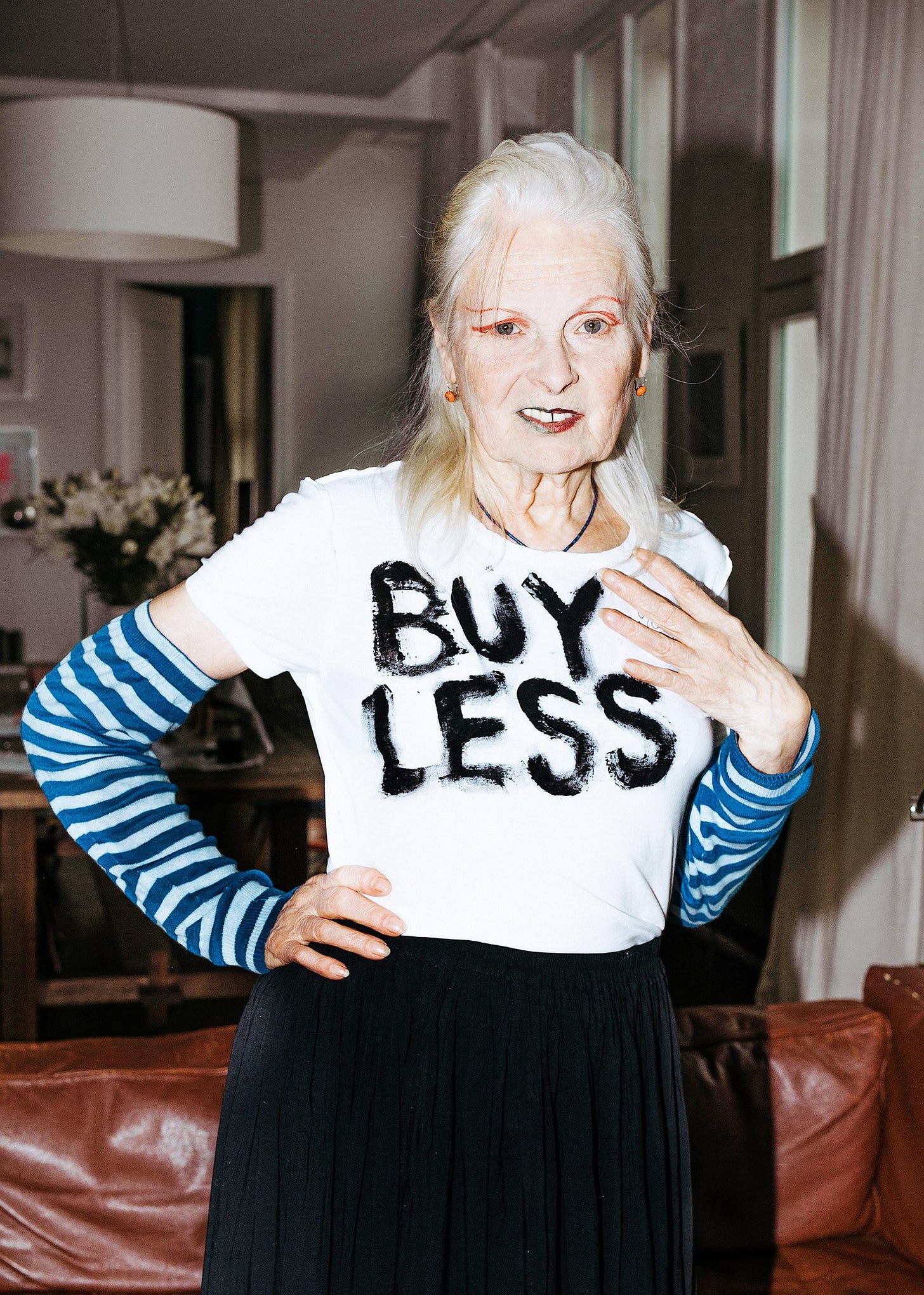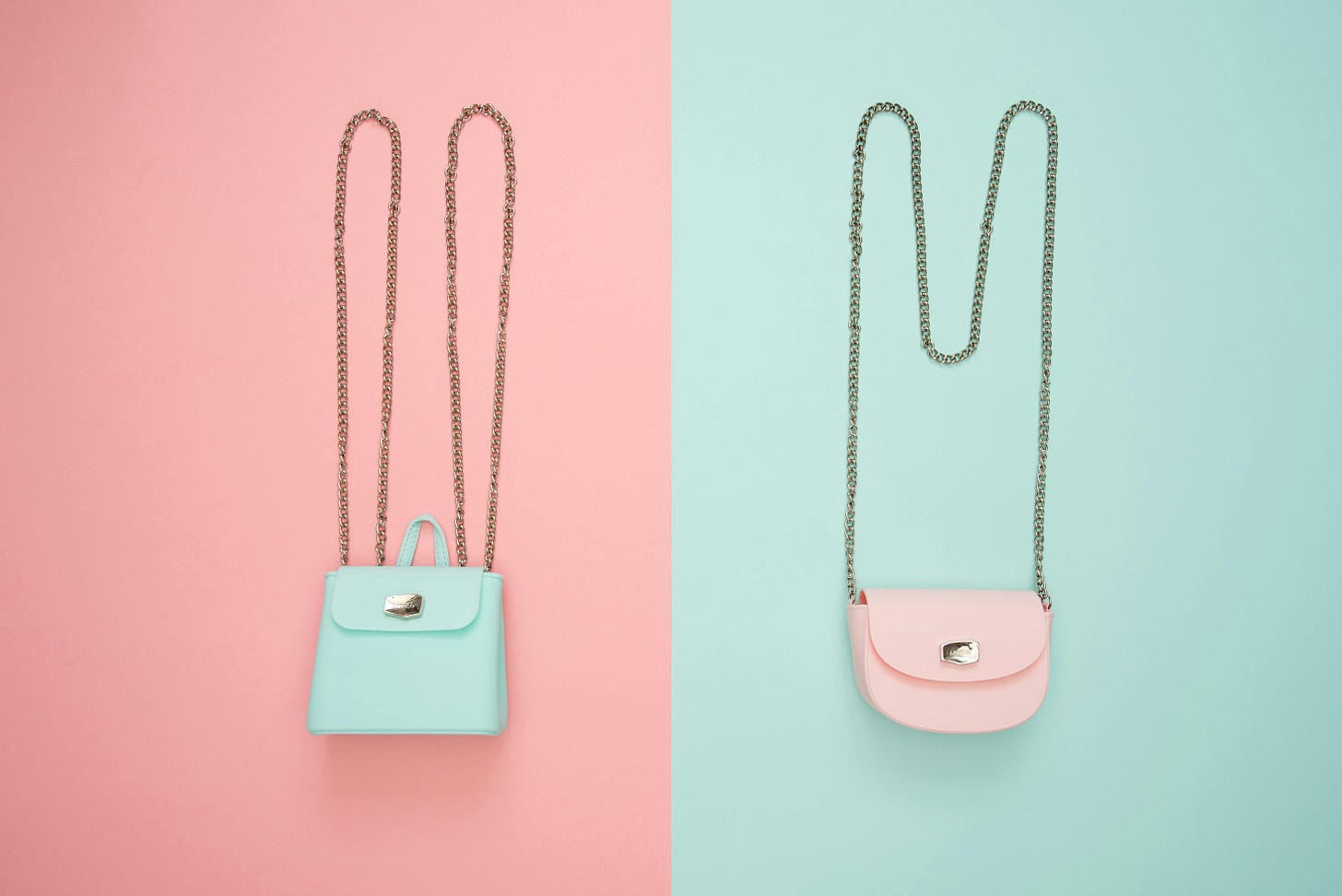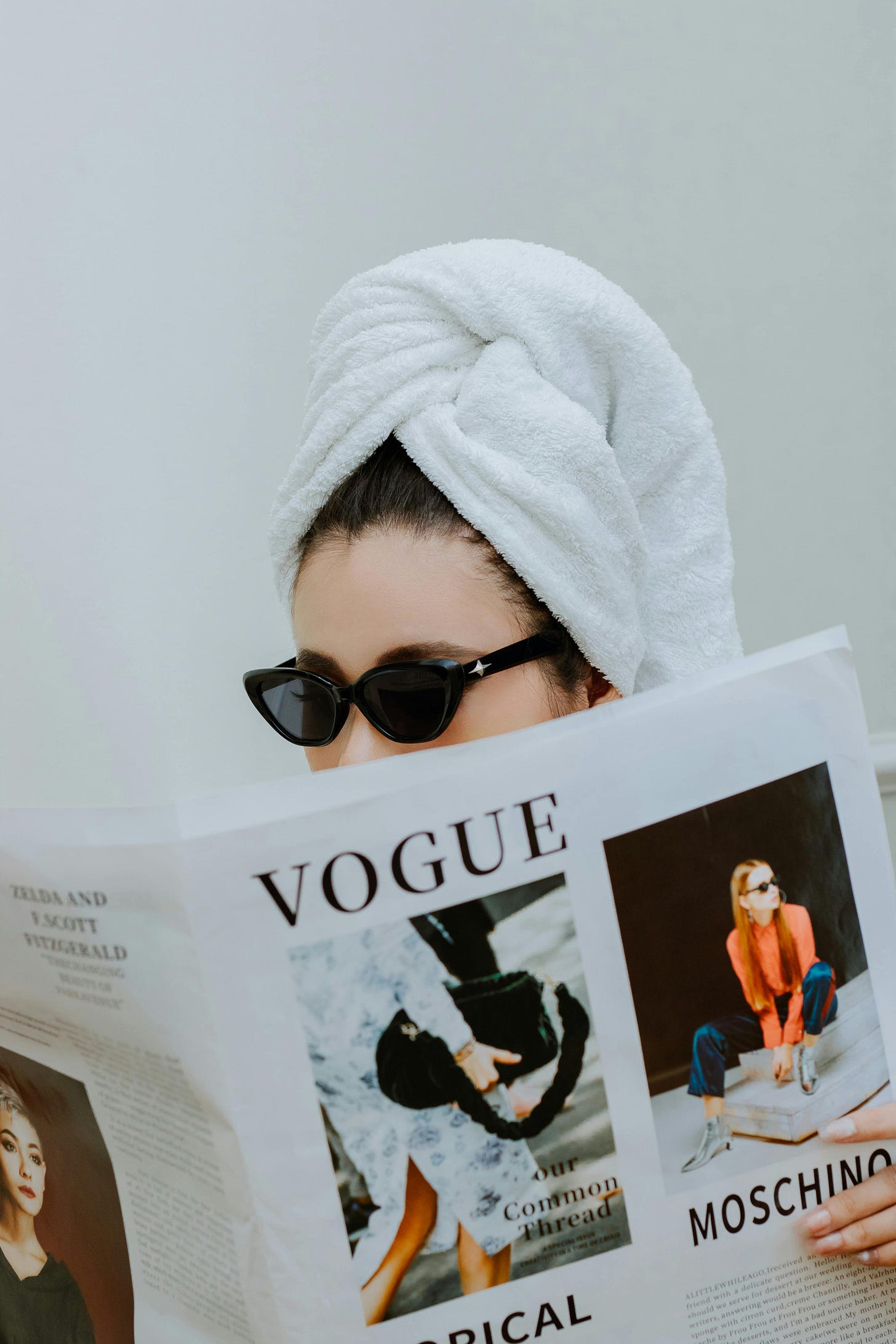The older I get, the more I realize that so many things in life come down to mindset. It impacts your health, your happiness, your relationships, your success … and your consumption patterns.
IMO, having the right mindset is the key to truly embracing the slow fashion movement. Our capitalist society wires our brain to want to consume recklessly, which means you might have to do a lot of un-learning.
I know I’ve had to, which is why I want to share the key mindset changes I’ve made to embrace slow fashion. This is a long read, because I had a lot to rewire. I tried to condense it as best as I could, but this is literally years of realizations in one place. So make yourself a drink or grab a comfy seat if you need to — the insights begin now.
Learn to understand what you need, not what you want
I’d say this is the golden rule of slow fashion.
Fast fashion manipulates us into thinking we need more than we actually do. You see it all the time in marketing: ‘must-have’, ‘essential’, ‘wardrobe staple’, or any other FOMO-inducing statement.
The truth is, you don’t need a lot. The rise of the capsule wardrobe (and our ancestors always being to get by with a fraction of what we have) proves that. I’m not going to tell you what you do need, because I believe there isn’t a universal answer. That’s the fun part — you get to curate your essentials.
However, if it’s something you can only see yourself wearing once or you already have something similar, you probably don’t need it.
Opt for quality over quantity
This is a motto to live by for many aspects of life, but it especially rings true for clothing and accessories. You won’t need to shop as frequently when you invest in higher quality pieces that actually last.
For example, I’m very much a sneaker girl for my casual shoes. I used to buy cheap ($ range) sneakers, but they would always wear out within a year — or sometimes just months — of me buying them. So I’d constantly have to get new sneakers. Last year I upgraded to higher quality models from Veja and Vessi, and they’re still going strong. The soles are still completely intact, and the uppers also look good. I’m guessing I won’t need replacements for a few more years.
I’ve also got plenty of well-made clothing that has been in my wardrobe for the better half of a decade. As Vivienne Westwood says, “buy less, choose well, make it last.”
Stop thinking of shopping as a hobby
I think one big reason why overconsumption has become such a problem is that we consider clothes shopping a hobby. The media perpetuates it all the time — think of the endless shopping sprees on shows like Gossip Girl and Sex and the City, or the phrase ‘retail therapy’.
It’s turned into something you do with your friends or when you’re bored — you hit up the mall or your city’s main shopping street, say you’re window shopping, but end up buying stuff you don’t really need for the dopamine hit. And online shopping has made it even easier. I know people that constantly shop online just so they have an endless stream of things to unbox when they’re at home. It gives them something to look forward to, even though they don’t really need what they’re buying.
I know it’s a hard habit to break. It was easy for me to steer clear of physical shopping; I worked retail for so long that the last thing I wanted to do in my spare time was spend time in shops. But I have lots of people in my life that still love browsing shops just for the fun of it. I get it, because I was part of the problem — it was literally my job to create a pleasant and enticing shopping experience as a visual merchandiser.
Instead, try to think of literally any other activity you can do. Connect with your friends over coffee or tea in a local café. Go to an art gallery, library, or museum. Spend time in nature. Play tourist in your own town. Pretend you’re like me, and you don’t want to go shopping because you’ve already spent enough time working in stores.
As for online shopping? This one’s tough, because it’s so convenient. Focus on other activities you can do at home, like really watching TV (put that phone away and focus on the story!), reading, writing, yoga/exercise, cleaning, cooking, baking, drawing … whatever keeps you away from the ecommerce sites.
Learn to shop your wardrobe
On a related note, always start with your wardrobe before you head to the shops. There are probably pieces you’ve been neglecting.
If you’re feeling uninspired, try re-organizing your wardrobe. This is a trick that’s straight out of the visual merchandising playbook. The reason shops switch up their displays so frequently is to make product look new. I can’t tell you how many times someone would think a piece from last season was brand new just because I moved it to a more central location when I was a visual merchandiser. It’s the exact same principle when it comes to your wardrobe. Even with the knowledge I have, I still get pleasantly surprised by pieces that have been hidden at the bottom of a pile or sandwiched between heavier garments when they resurface.
Embrace outfit repeating — especially for special occasions
I’ve written about the stigma of outfit repeating before, but it bears repeating.
I’d say most of us re-wear our casual/work clothes (we’ve all got our favourite jeans, t-shirts, and sweatshirts on rotation), but the big issue is special occasion pieces.
I don’t know if it’s the trickle-down effect of celebrities rarely re-wearing red carpet outfits or something else, but I think most people feel pressured to buy a new outfit for special occasions. I see it all the time on social media and IRL — people saying they ‘need’ to buy a new dress or going out top for a wedding, vacation, or holiday party.
When my co-workers threw me a bachelorette party, literally everyone (there were about 15 people in attendance) bought a new outfit except for me. We were discussing outfits about a week before the party, and everyone was surprised when I said I was going to wear a dress I already own.
I went through a phase in my 20s when pretty much all I’d buy was going out clothes. Not because I had a lot of special occasions to attend, but because they were more fun than basics. I don’t know who I thought I was — I was shopping like I was a Manhattan socialite when I was a Vancouver introvert. The result? My closet was filled with fancy pieces that I rarely wore because I don’t even go out that much. With that said, I always had a good selection when an occasion did come up.
I ended up selling and donating a lot of those pieces when I moved back to Canada, because I realized they were ‘want’ buys, not ‘need’ buys. Now I’m like Abbi from Broad City — I’ve got my one party dress that I proudly re-wear for every special occasion.
Resist the seasonal refresh
With each seasonal change, the fashion industry encourages us to refresh our wardrobes with new pieces. This is because brands and designers typically release seasonal collections, and they need to promote them.
But you don’t actually need to refresh or update your wardrobe every season, especially if your existing collection is perfectly fine. I’m not buying any new clothes this fall/winter season, because I’ve already got a great selection of knitwear, outerwear, and cold weather accessories. I did buy some new boots as a birthday treat, but in fairness they filled a gap in my collection: they were cute and water-resistant. My other boots were cute, but mostly inappropriate for gloomy Pacific Northwest weather.
When the next seasonal switch comes around, check out what you already have before you decide to go shopping.
Shop slowly & carefully
I mean, it’s in the name. Slow fashion is very much about consuming fashion at a slow pace, and that starts when you’re buying a new piece.
Put thought into each and every piece. That might mean waiting a few hours, days, weeks, months, or even years to buy something new.
Before you hit the ‘buy’ button or head to the cash register, ask yourself the following questions:
Do I have something similar?
Will I wear this regularly?
Can I style it with most of my existing wardrobe?
Basically, you want to ensure this will be a piece you get plenty of wear out of. Resist the impulse purchases.
Approach trends with caution
A lot of people say that slow fashion is anti-trend and pro-timeless designs, but I think you can merge the two. You just have to be careful.
The thing is, it's normal to want to follow trends if you’re into fashion. You probably want to look current, or you’re simply inspired by other people you see on the street or on social media.
I think experimenting with trends is ok as long as you’re staying true to yourself and only following the ones you actually like. To try out trends in a slow manner, see if you can avoid shopping first. Maybe you have an older piece that’s come back into style. If not, think before you commit to buying. If it’s something you think you’ll wear beyond a season, I say go for it.

Learn to love the old
The fashion industry encourages us to desire newness, and disregard anything old.
New is good. It’s fun, fresh, and exciting.
Old is bad. It’s stale, outdated, and boring.
It’s why we want to continually shop for new things, and why we feel a little rush when we wear said new things.
But it’s a toxic mindset, because there’s absolutely nothing wrong with things that are old.
I like to place my old clothes and accessories in the same category as my all-time favourite albums, the comfort TV shows and movies I can watch and enjoy a million times over, the beautiful landmarks and locations I love to visit, even the people in my life that I’ve known and loved for years and years.
Old is classic, comforting, and powerful. It has a hold on me.
I won’t lie — I still feel that little rush when I do wear new things. But I also can’t wait for them to transform into the faithful pieces I return to again and again.
If you’ve got this far, I sincerely thank you and hope you found these insights valuable!
For those who consider themselves advocates of slow fashion, do you agree with these mindset changes? Have I missed any? I’d love to hear your thoughts.
And for anyone that’s new and wants more slow fashion & living content, you know what to do ↓










